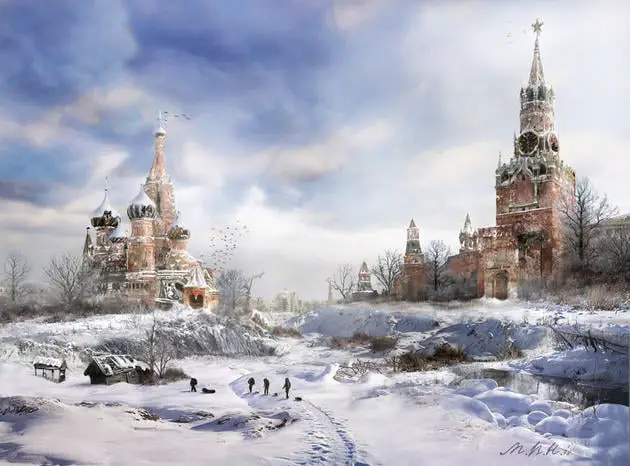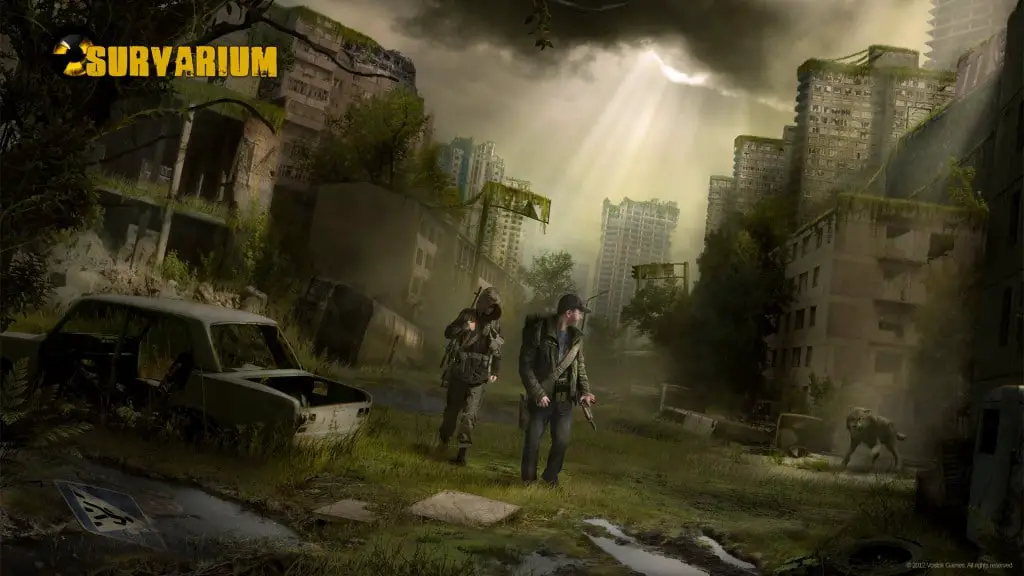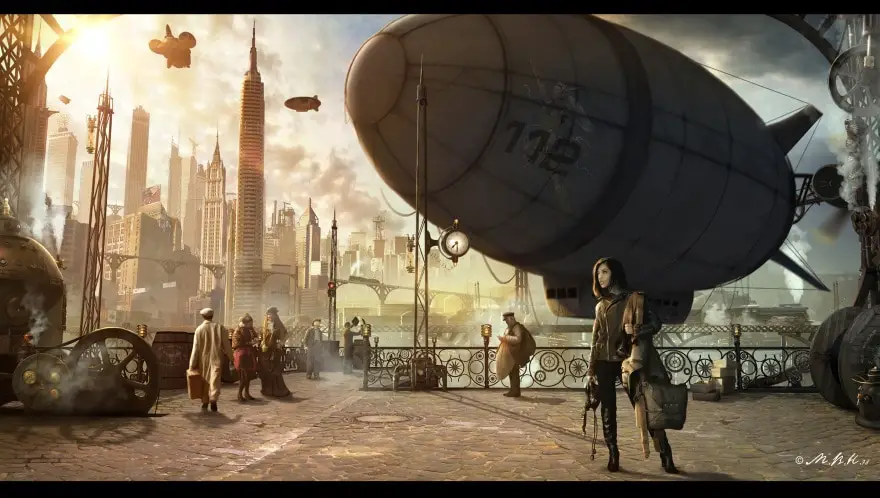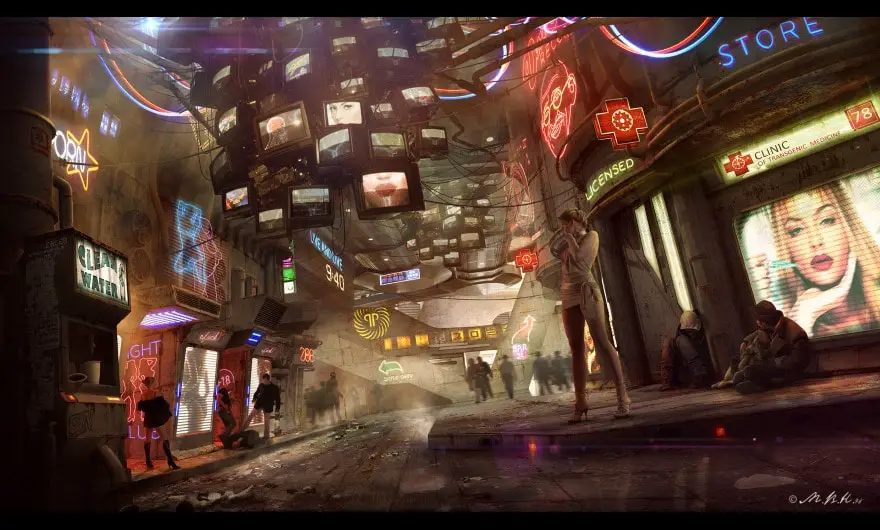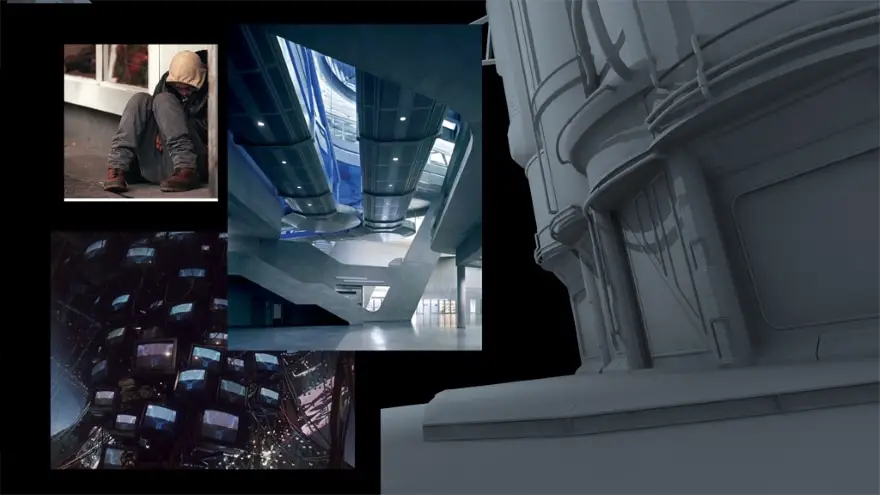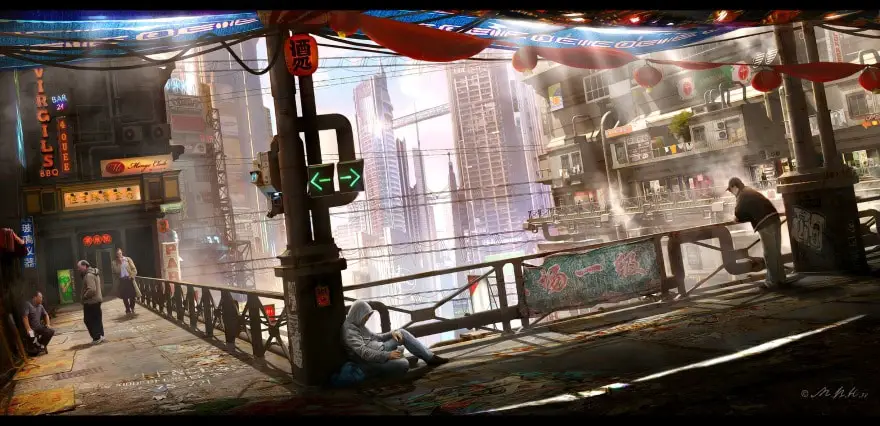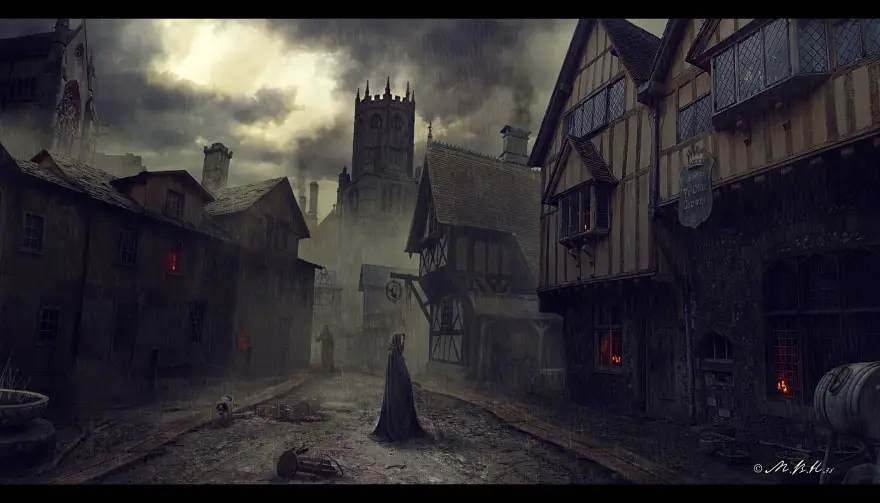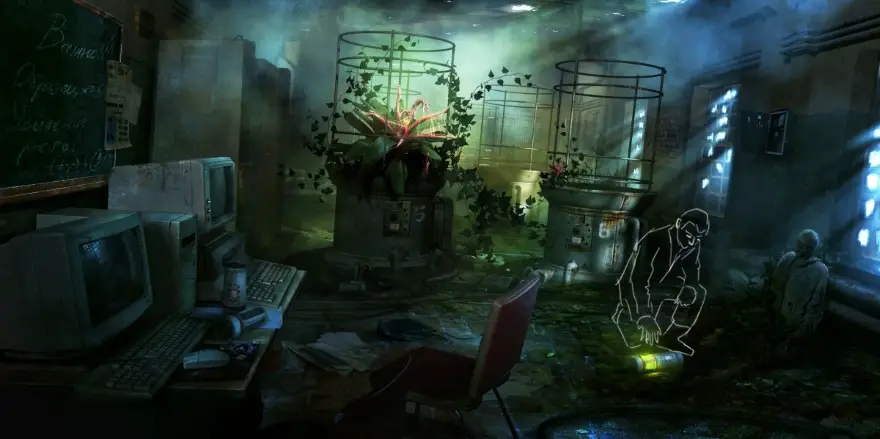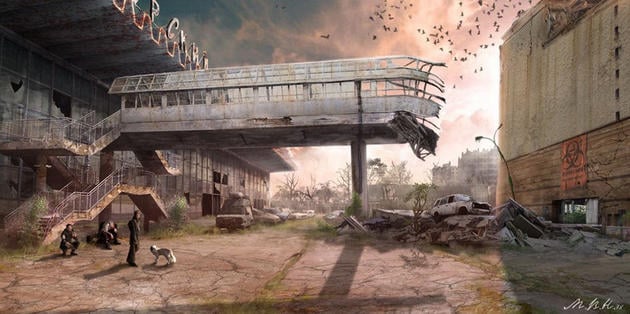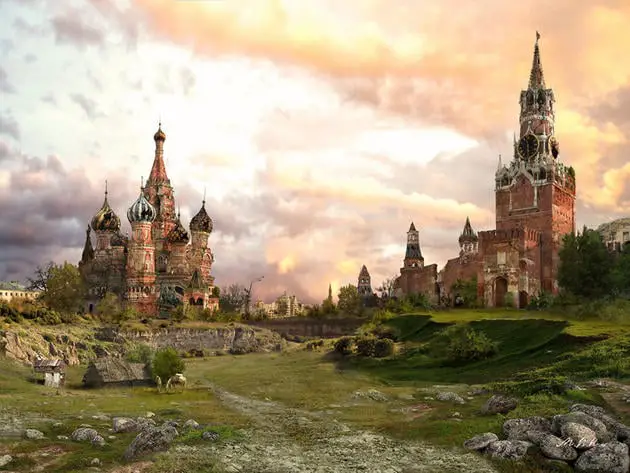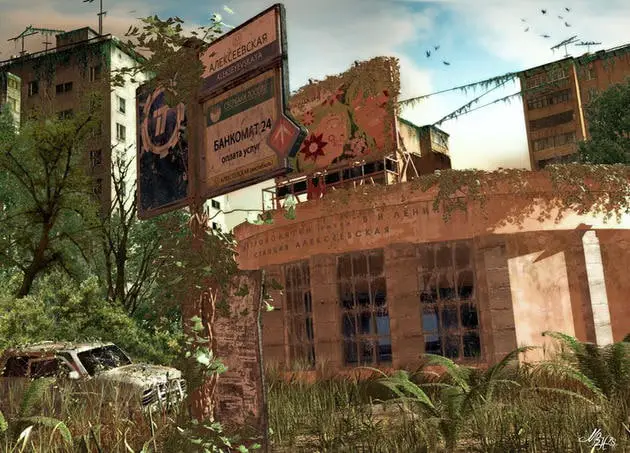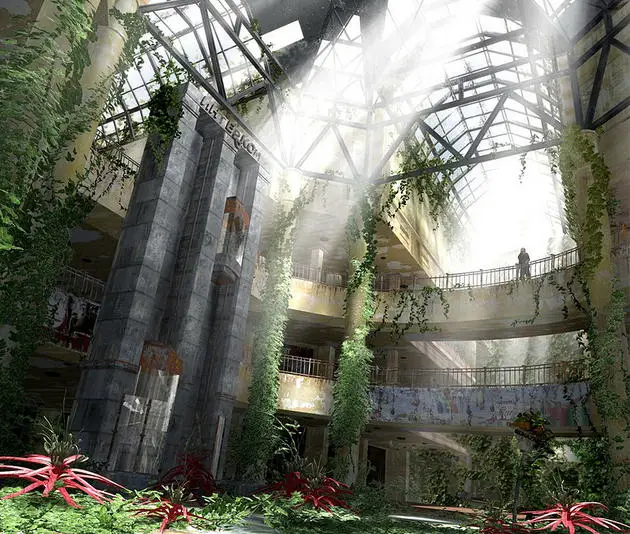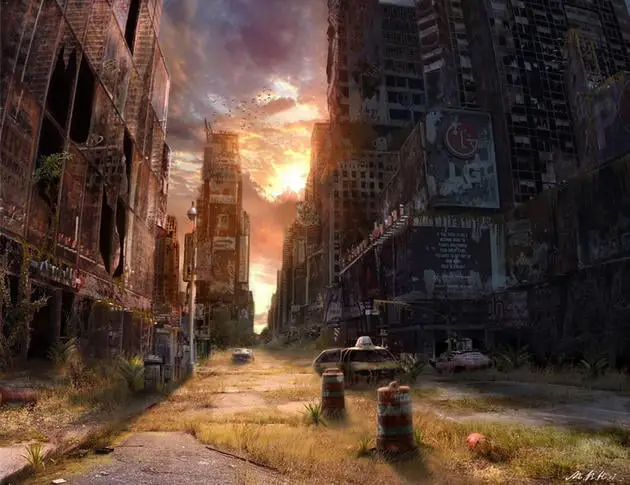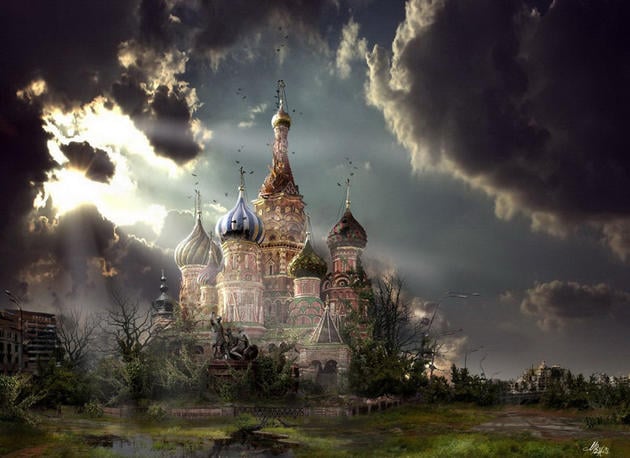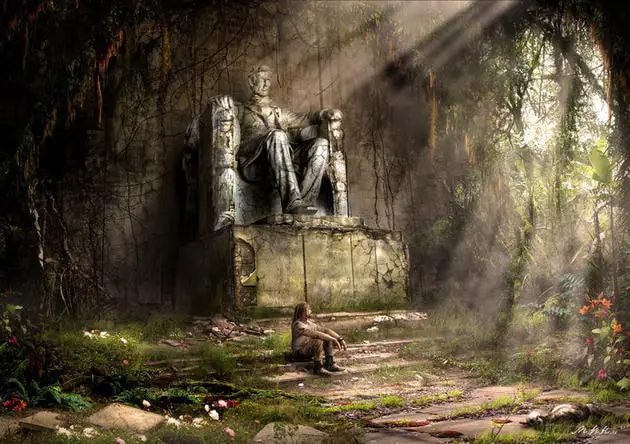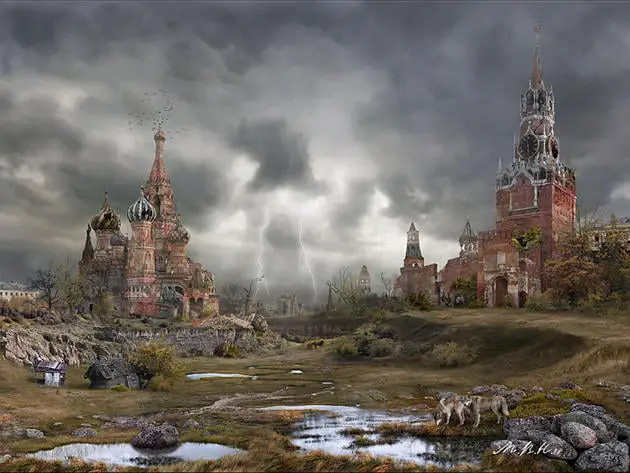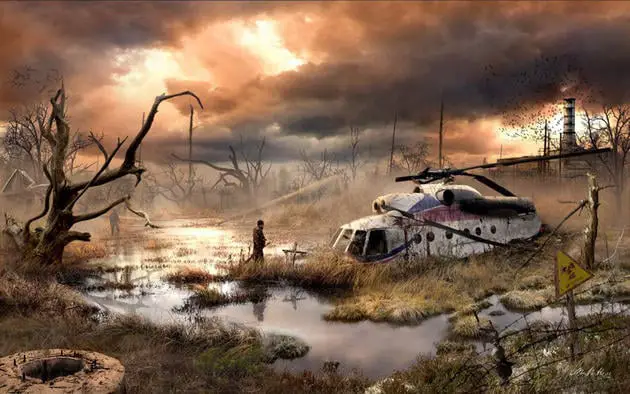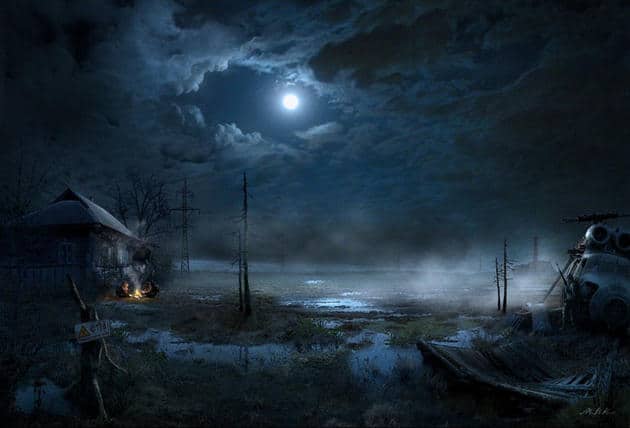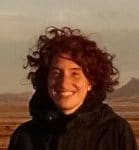The following statement from artist Vladimir Manyuhin about his work was published in Russian on ru.survarium.com, the site of the game Survarium for which Manyuhin creates illustrations. Translation was performed by Sophia Rehm, a SRAS Home and Abroad Scholar studying in Bishkek.
The work of artist Vladimir Manyuhin is well known to all post-apocalyptic genre fans. Just enter the Russian word “постапокалипсис” (post-apocalypse) into any Internet search engine, and Vladimir’s art, with its decimated cities and ruined human civilization, will appear among the top results. It is no wonder that the artist has been in close collaboration for several years with Ukrainian video game developer Vostok Games. He creates wonderful illustrations for the game Survarium, precisely conveying the mood of a world that has survived a “Green Apocalypse.” Vladimir should not be seen as purely an artist in the post-apocalyptic genre, however: his portfolio contains a wide variety of artwork in every style.
Vladimir Manyuhin has this to say about his art:
I have been drawing for a very long time, since childhood. I took up graphic arts seriously in 2000, so nearly 15 years ago.
My art is mostly influenced by old, classic sci-fi and fantasy works, both books and movies. Contemporary fantasy, in my opinion, has a cardboard-like quality; it’s sort of superficial. The same is true of movies. They are either one big special effect, or a naïve, illogical plot. Although there are some exceptions.
I don’t have a particular muse. I’m inspired by everything that surrounds us. Look around: there are so many ideas. As far as what most affects my work– between constraints on the free flight of creativity, the availability of resources for creating a finished piece, or considerations about how to capture a composition within a narrow technical framework… I would answer that what dominates is actually a chronic lack of time. Because there is always a desire to do more and more.
The atmospheric quality of the work is purely a question of perception. There are no special techniques for that. You just need to imagine a living version of what you are creating, and be there mentally. And then the atmosphere will arise on its own.
Depending on the complexity of the work and the wishes of the customer, one piece takes from one to two weeks to complete. I deal with different orders. Some people rely on my ideas as the artist and give me complete freedom; others have concrete ideas and provide direction. They may provide a particular concept or subject, but the implementation is mine.
The difficulty of implementation depends on the idea itself. Whether the idea is mine or not doesn’t matter. It isn’t difficult to work on someone else’s idea. But it is necessary to have an interest in the work. Sometimes, it’s interesting simply to look at a familiar place from a different angle – and that can lead to a new piece. Desire and imagination are everything.
There are times when my persuasions run contrary to clients’ demands. In those cases I’ll either compromise, or completely acquiesce to the customer’s wishes. After all, I work for the customer.
Sometimes I get orders that are inherently not boring, but monotonous. I try to refuse those. The most uninteresting thing to do is monotonous work.
My work on Survarium began with an idea that came from Vostok Games. Project Lead Ruslan Didenko proposed that I draw the art for a new game that they had just begun to develop. I then created several more pieces for them, and my collaboration with the studio continues to this day.
Modern technology provides huge prospects for artists. Now, in order to create something and show it to the world, all you need is a computer, Internet access and a tablet. Your work will be seen on the other side of the world.
Now I will go into more detail about the creative process. The idea for each illustration arises unexpectedly.
For instance, a bridge span…
…can suggest an idea like this.
Other times, I just want to capture an interesting perspective, as in this piece.
I love different genres: cyberpunk, steampunk, post-apocalypse, fantasy. Here is an example in the genre of steampunk.
I came across an interesting photo of a girl holding a parachute on the Internet. And then the idea came to me of where and how to use the image. Because people are not the focus of my work; I try to focus on characters’ surroundings, on the world around them. Since matte-painting involves the use of photographs, I am always looking for good image references to use. For example, a few photographs of skyscrapers and a couple of hours of drawing on them produce an interesting city in the style of steampunk. Of course, it’s not always possible to find what you need on the Internet, in the necessary resolution and with the right perspective. Then I employ the help of 3D Max, in which I can model what I need: a dirigible and mooring pier. Sometimes it’s necessary to do almost everything in 3D, as in this case. A three-dimensional model and a few photographs served as the basis of the piece.
In this work, the starting point was monitors hanging from the ceiling. The entire image was built around them. I like the classic elements of cyberpunk: night, neon, holographic labels, everything somewhat gloomy.
But sometimes night turns to day, and this world becomes more cheerful.
Once I have conceived of a piece, the initial version usually doesn’t differ dramatically from the final one. Sometimes, though, you want to try out more than one variation, and then you have two pieces, united by a single idea.
The genre of fantasy usually involves beautiful, epic landscapes. This makes everything simpler: I generally use only photographs, though in rare cases some modeling is necessary.
In my work for Vostkok Games, I used both 3D models and reference sheets. For the most part, I made use of photographs. I tried to convey the atmosphere of the apocalypse, but at the same time capture the mystery of nature. The characters were rendered at Vostok Games, in certain poses that we determined in advance.
Here, by the way, are characters in various poses, done for another piece.
For the piece Laboratory Vector, the unusual equipment around the plants, and the premises of the laboratory, were done with modeling.
The original version looked different. It needed greater scale, so I decided to enlarge the building. This was the final result of all the work, and it was accepted.
Beyond his work in gaming, Vladimir Manyuhin is probably best known for his renderings of major landmarks (mostly from his native Russia) in post-apocalypse style.


